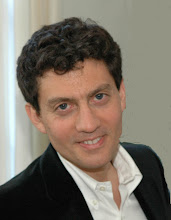 PROCESS RING – REFLECTING COMPETENCY
PROCESS RING – REFLECTING COMPETENCY
“The salvation of this human world lies nowhere else
than in the human power to reflect.”
than in the human power to reflect.”
Vaclav Havel
We all could do with a little more thinking. Introspection is under valued and unpracticed. It is another one of those seemingly fuzzy things left outside of the walls of business yet nothing could be more important to the success of an organization and the well being of its members. Our ability to reflect is a defining characteristic of being human. So why do most of us prefer our bliss of oblivious autopilot in lieu of a more mindful orientation to the world around us? It takes time, discipline, and commitment. Given the finite nature of these assets we do not part with them easily. Socially, as evidenced by our educational system, we do not make reflection a priority. In many instances we go out of our way to discourage it.
Reflection requires focusing our attention in a single direction with circumspection. The image of an hourglass is useful in understanding the state of mind we need to achieve in order to benefit from our efforts. Individual grains of sand pass through a narrow point before they drop into a large collection area. When we concentrate it is akin to the narrow point of an hourglass. When we review an experience and it yields a wealth of insights it is akin to the large open collection area that the grains of sand fall into. From that narrow point of concentration a new vista of perception becomes possible. Our minds open up to new possibilities. We are able to look at our experiences in a totally new way. A reflective mind discovers insights in otherwise meaningless experiences.
The insights we gain from reflection are transformed into knowledge, which become raw chunks of reusable information. Herein lays the greatest challenge. How do we use these chunks? Knowledge provides us with a construct to manage and manipulate abstractions mined from our experiences but we have to find a way of applying them to new situations. When we look for applicability of our knowledge by being attentive to the moment we discover points of intersection. A new experience has some correspondence to a previous one. We leverage the pattern capabilities of our minds and move knowledge into the present. This pattern match guides our behavior. Some benefits include avoiding mistakes we have made in the past, exhibiting a greater capacity for empathy, demonstrating new understanding, or acting with greater confidence. When it comes to interpersonal or intrapersonal dynamics, knowledge applied in the present is wisdom. Arguably, the greatest personal power that we can pursue is wisdom. While information by itself is useless and knowledge brings with it a certain degree of influence, wisdom deepens us. The bottom line is that we cannot be effective without reflection. The feedback gained from flexing our internal powers of observation is invaluable and cannot be procured through any other means.
Now that we have established the importance of reflecting, how do we do it? Reflection can be broken down into four parts:
1. Visualizing
2. Sitting
3. Inviting
4. Sifting
Part I. of Reflecting: Visualizing
Reflection is made possible through the use of visualization. The word visualizing can be misleading. We need to use all of our senses when we visualize. The more senses we can invoke the richer our visualizations will be. Saint Ignatius of Loyola wrote a guide for monks called The Spiritual Exercises. He like others before him had an intuitive grasp of how our minds work without the benefits of psychological research we have today. The spiritual exercises are a collection of guided visualizations on Jesus Christ’s life. Loyola instructs priest to begin imagining a scene from Jesus’ life by walking through the sights, sounds, smells, tastes, and feelings of it. The result is a vivid and personal re-experiencing of a story. Athletes offer another perspective on the power of visualization. Mental rehearsals have been shown to result in muscular activity that can be measured. These mental rehearsals enable athletes to practice, learn, and improve motor skills. They can also be used to strengthen cognitive and psycho-emotional skills such as concentration, focus, and stress management. Visualizations are effective because they are not just mental phenomena they engage our whole being.
In order to reflect on our experiences we must relive them. Visualization offers us this ability. We re-enter our past experiences as an observer. Our imaginations fuel our archival inquiry and engage us as active observers. Like the spiritual exercises, we can also reflect on stories outside of our personal experiences. Whatever we visualize is projected into a space where we can begin to manipulate it. In this way reflection has the potential to be more than an analytical rehashing of an experience. Visualization creates a story while analysis by itself creates a collection of linearly associated data points. If we are to win any insights from our experiences or effectively find connections between our experiences we will need to work with them as stories.



